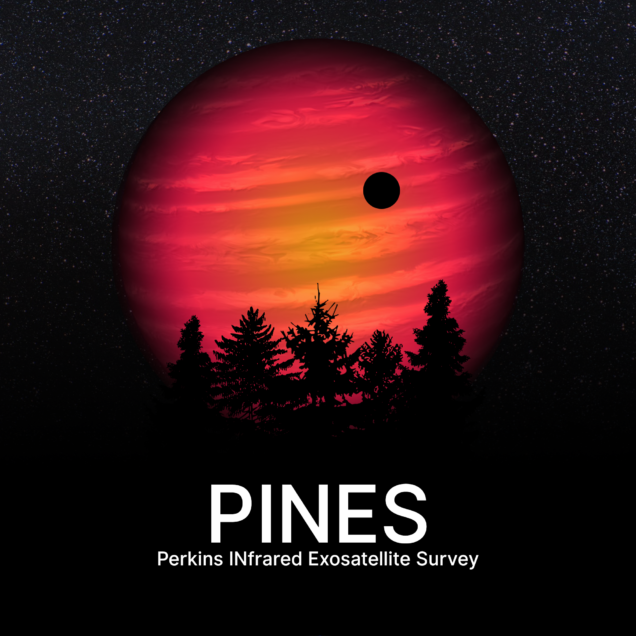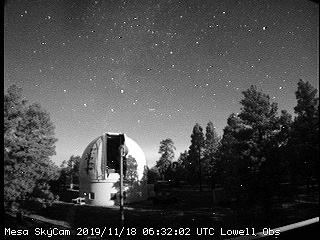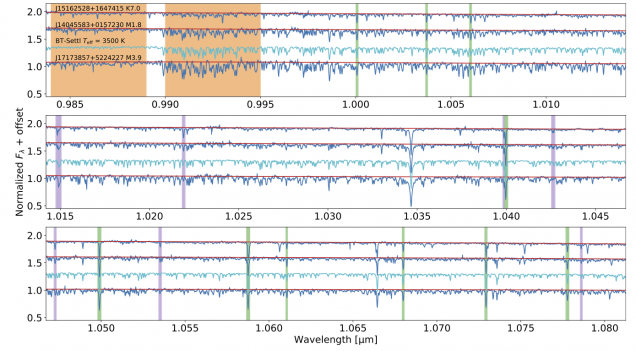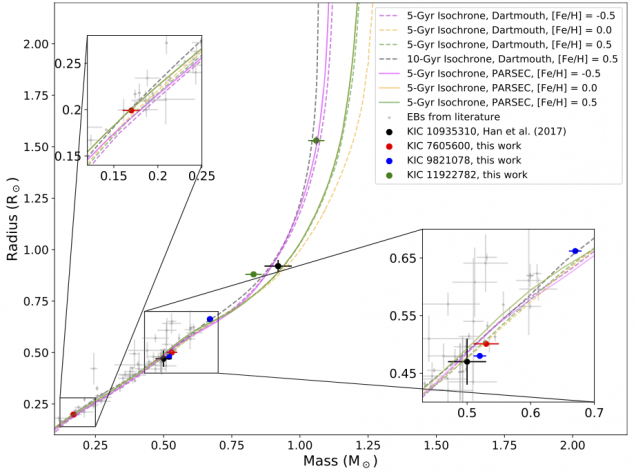Research Projects
Atmospheres of Brown Dwarfs and Rogue Planets
We are part of an international collaboration investigating the atmospheres of “planetary mass objects” (also called “rogue planets”) and brown dwarfs: celestial objects without the necessary mass for sustained hydrogen fusion in their cores. We use ground and space-based telescopes to measure brightness variations as the objects rotate, revealing their atmospheric surfaces. By observing brightness variations at different wavelengths, we probe different layers of the atmospheres. See the following links to papers and press releases:
NASA’s Webb Exposes Complex Atmosphere of Starless Super-Jupiter
Multiple Patchy Cloud Layers in the Planetary-mass Object SIMP 0136+0933
PINES: The Perkins INfrared Exosatellite Survey

Project website: https://pines.bu.edu
PINES is a search for exosatellites transiting the nearest L and T dwarfs. L and T dwarfs can be either hydrogen-fusing stars, brown dwarfs or planetary-mass objects. Objects that orbit L and T dwarfs could be classified as either exoplanets or exomoons, depending on the host, so we prefer the more general term exosatellite. We are currently searching for exosatellites orbiting L and T dwarfs via the transit method with the Mimir infrared camera on Boston University’s 1.83-meter Perkins Telescope. For the survey design, please see this paper led by current PhD student Patrick Tamburo:
The following two papers discuss our initial results and our first exosatellite candidate:
The PINES name was inspired by the ponderosa pine trees that surround the Perkins Telescope. PINES is a collaboration between Boston University (PI: P. Muirhead), the American Museum of Natural History, the University of Washington and UC San Diego. Support for this project is provided by NASA’s Exoplanet Research Program.

Brief but Spectacular: New Windows in the Physics of Common Envelope Evolution
Funded by an NSF award, the Low-mass Star Group is partnering with the Rochester Institute of Technology and the University of Toronto to investigate the common envelope (CE) phase of binary stars. The CE phase of binary star evolution is short lived: only about 1000 years. As such, we are very unlikely to witness the common envelope phase of a binary star, given astronomical time scales. However, post-common envelope (post-CE) systems are relatively common, consisting of a white dwarf and (typically) an M dwarf star. In this project, we will identify and investigate post-CE systems in clusters, measuring the stellar masses, radii and luminosities. Combined with cluster ages, we aim to flesh out the physics of this “brief but spectacular” phase of stellar evolution.
A Fresh Look at M Dwarfs
Funded by the NSF, we are partnerning with Arizona State University (Prof M. Line) and the University of California Santa Cruz (Prof. J. Fortney) to develop new techniques for modeling the spectra of M dwarf stars. Specifically, we are applying “atmospheric retrieval” methods that typically used on brown dwarfs to M dwarf stars. Our first paper, led by ASU PhD student Aishwarya Iyer, was recently accepted to the Astrophysical Journal:
Chemical Ages of M Dwarf Stars
It is particularly challenging to measure the ages of M dwarf stars. Recently, we developed new techniques to estimate M dwarf ages based on their abundances, specifically their α-element enhancement over iron, or [α/Fe]. Iron and α-elements are dispersed into the Galaxy by different types of supernovae, which occur at different rates in the past. The ratio of α-elements to iron in a star can tell us the gas content of the Milky Way when and where the star formed.
Recent group member Mark Veyette (BU PhD ’18) developed a technique to measure Ti48 and Fe abundances of M dwarf stars using their absorption lines in high-resolution Y-band spectra obtained at Keck Observatory. Though not technically an α-element, Ti48 is a rapid decay product of Cr48, a true α-element.

Using these data, we can now infer ages of M dwarf stars by their α-element enhancement over iron. For the final chapter of Mark’s thesis, he determined the ages of canonical M dwarf stars that host planets. He found that planets orbiting M dwarf stars can remain in eccentric orbits for billions of years. For papers related to this work, please see:
Support for this project is provided by the National Science Foundation’s Astronomy and Astrophysics Research Grants program.
Magnetic Inflation and Stellar Mass
For several decades there has been a mismatch between the observed sizes of M dwarf stars and predictions for stellar models. There are several proposals to explain the discrepancy, and in this program we are aiming to determine specifically the cause of the mismatch. We are using the Discovery Channel Telescope and NASA’s Infrared Telescope Facility to measure precise and accurate masses and radii of M dwarfs. This work is the primary effort of current PhD student Eunkyu Han:

Figure from Han et al. (2019) showing masses and radii of M dwarf stars in eclipsing binary systems, and predictions from evolutionary models.
For papers related to this work, please see:
Support for this project was provided by NASA’s Exoplanet Research Program.
The Transiting Exoplanet Survey Satellite (TESS)
In support of NASA’s TESS Mission (lead institution: MIT), we developed a catalog of cool dwarf stars for inclusion into the Candidate Target List, a prioritized list of stars for short-cadence observations. The following paper describes the first Cool Dwarf Catalog, with the second paper currently in prep:
